M6.9 solar flare, sunspot regions 2241 and 2242
Thursday, 18 December 2014 22:33 UTC
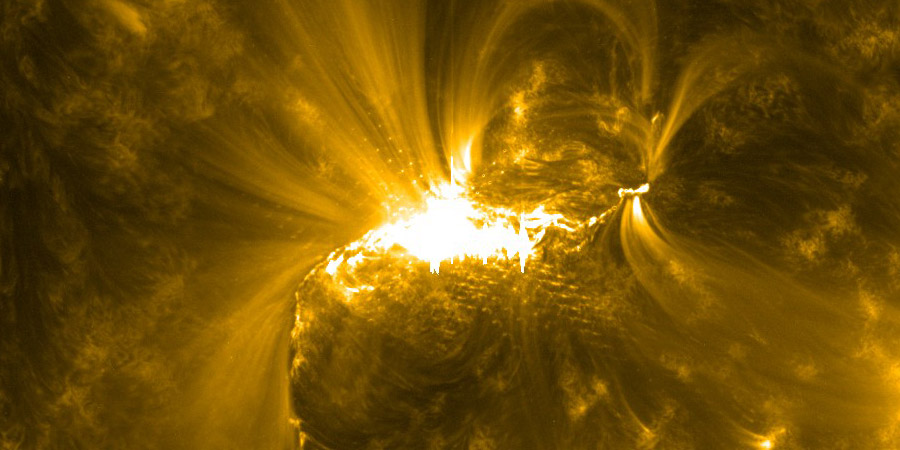
Solar activity reached high levels. Sunspot regions 2241 and 2242 are the dominate sunspot regions on the earth-facing disk and it is these two sunspot regions that produce all the activity right now. C-class solar flares are a common sight and we just saw a long duration M6.9 (R2-moderate) solar flare that peaked at 21:58 UTC. Can we expect more strong solar flares from these groups and will this M6.9 solar flare be eruptive?
M6.9 solar flare
Solar activity increased to high levels just moments ago as sunspot region 2241 produced a long duration M6.9 (R2-moderate) solar flare that peaked at 21:58 UTC.
Strong M6.93 solar #flare from #sunspot region 12241 - Follow live on http://t.co/8JIfkaXUPc pic.twitter.com/Ldu322hVFR
— SpaceWeatherLive (@_SpaceWeather_) 18 december 2014
Some darking of the solar corona can be seen following this event which could be a sign that a coronal mass ejection was launched. It is however hard to say how large this coronal mass ejection will be and if it will come towards us. For that we need to wait for coronagraph imagery from SOHO/LASCO which could take a few hours before it is available. We do know that sunspot region 2241 is facing earth right now so it is very much possible that we could see some kind of an earth-directed component should there indeed be a coronal mass ejection associated with this event.
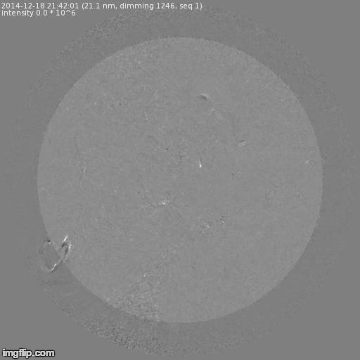
ALERT: X-Ray Flux exceeded M5 Threshold Reached: 2014 Dec 18 2155 UTC NOAA Scale: R2 - Moderate
SUMMARY: 10cm Radio Burst Begin Time: 2014 Dec 18 2150 UTC Maximum Time: 2014 Dec 18 2156 UTC End Time: 2014 Dec 18 2204 UTC Duration: 14 minutes Peak Flux: 240 sfu Latest Penticton Noon Flux: 213 sfu
SUMMARY: X-ray Event exceeded M5 Begin Time: 2014 Dec 18 2141 UTC Maximum Time: 2014 Dec 18 2158 UTC End Time: 2014 Dec 18 2225 UTC X-ray Class: M6.9 Optical Class: 2n Location: S11E10 NOAA Scale: R2 - Moderate Comment: Optical class is preliminary.
ALERT: Type II Radio Emission Begin Time: 2014 Dec 18 2222 UTC Estimated Velocity: 664 km/s
More information regarding this event will be provided tomorrow (Friday) when SOHO/LASCO coronagraph imagery becomes available.
Sunspot region 2241
Sunspot region 2241 continued to develop and now has multiple delta structures most notably among the trailing sunspots. There is a decent amount of magnetic mixing and another M-class (R1-R2) solar flare from this sunspot region is likely in the next 24 hours. An X-class event is not impossible.
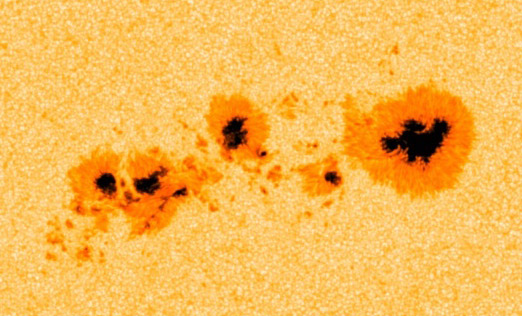
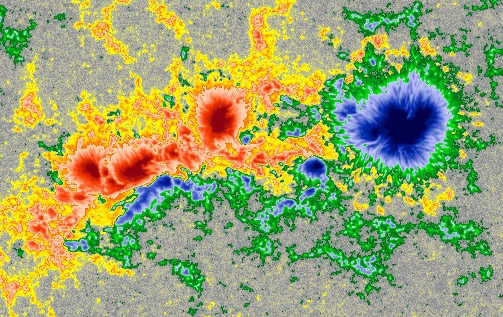
Sunspot region 2242
Sunspot region 2242 matured and the large areas of opposite polarities seem to be seperating a bit. It still has at least two delta structures of which one is closely packed to an umbra spot of opposite polarites. We can conclude that this sunspot region still has the potential to produce an M-class (R1-R2) event in the next 24 hours with a slight chance that it will produce an X-class (R3) event.
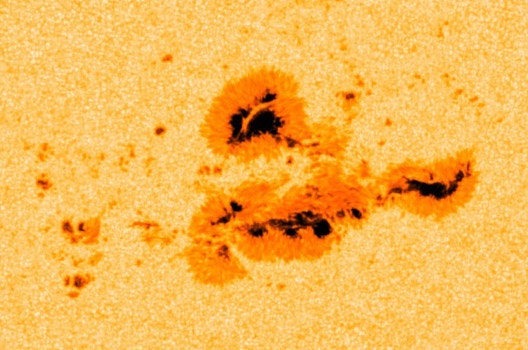
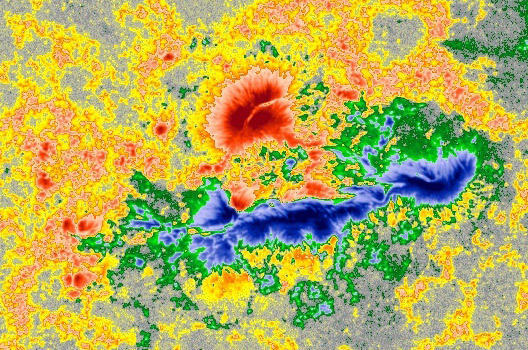
M-class flare probability for the coming 24 hours: 60% chance
X-class flare probability for the coming 24 hours: 20% chance
Solar activity will likely be at moderate to high levels tomorrow. It is worth noting that both sunspot regions are facing earth right now and could launch an earth-directed coronal mass ejection. All the other sunspot regions on the earth-facing disk are unremarkable. Any activity will likely come from sunspot region 2241 or 2242. For all an overview of all the sunspot regions on the earth-facing disk right now please visit this page.
Images: NASA SDO.
Thank you for reading this article! Did you have any trouble with the technical terms used in this article? Our help section is the place to be where you can find in-depth articles, a FAQ and a list with common abbreviations. Still puzzled? Just post on our forum where we will help you the best we can!
Latest news
Latest forum messages
Support SpaceWeatherLive.com!
A lot of people come to SpaceWeatherLive to follow the Sun's activity or if there is aurora to be seen, but with more traffic comes higher server costs. Consider a donation if you enjoy SpaceWeatherLive so we can keep the website online!

Space weather facts
| Last X-flare | 2025/03/28 | X1.1 |
| Last M-flare | 2025/03/31 | M1.2 |
| Last geomagnetic storm | 2025/03/27 | Kp5 (G1) |
| Spotless days | |
|---|---|
| Last spotless day | 2022/06/08 |
| Monthly mean Sunspot Number | |
|---|---|
| February 2025 | 154.6 +17.6 |
| March 2025 | 127 -27.6 |
| Last 30 days | 127 -25.7 |


